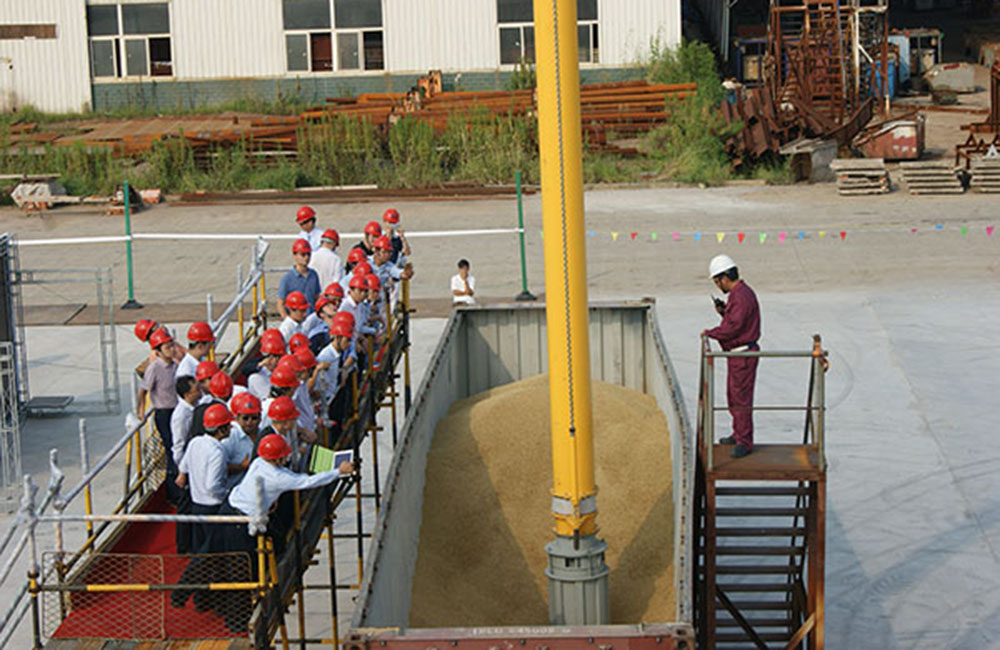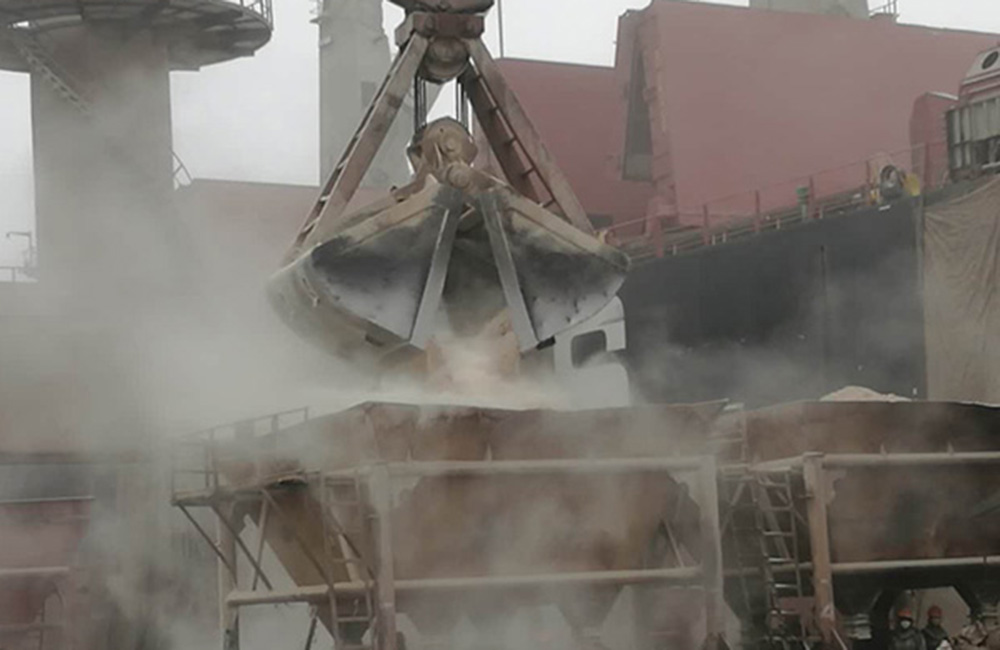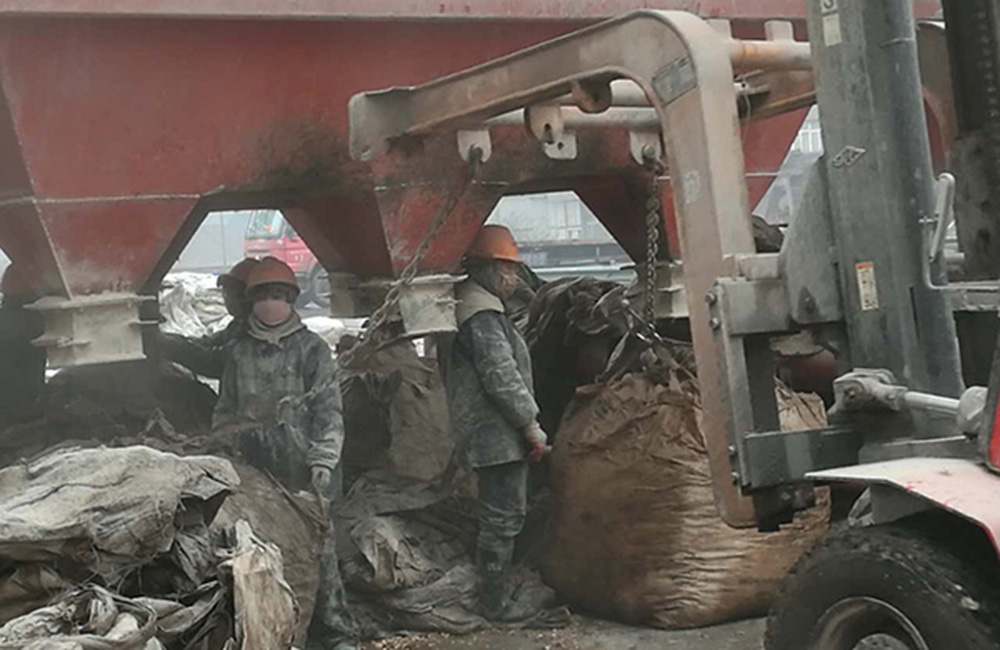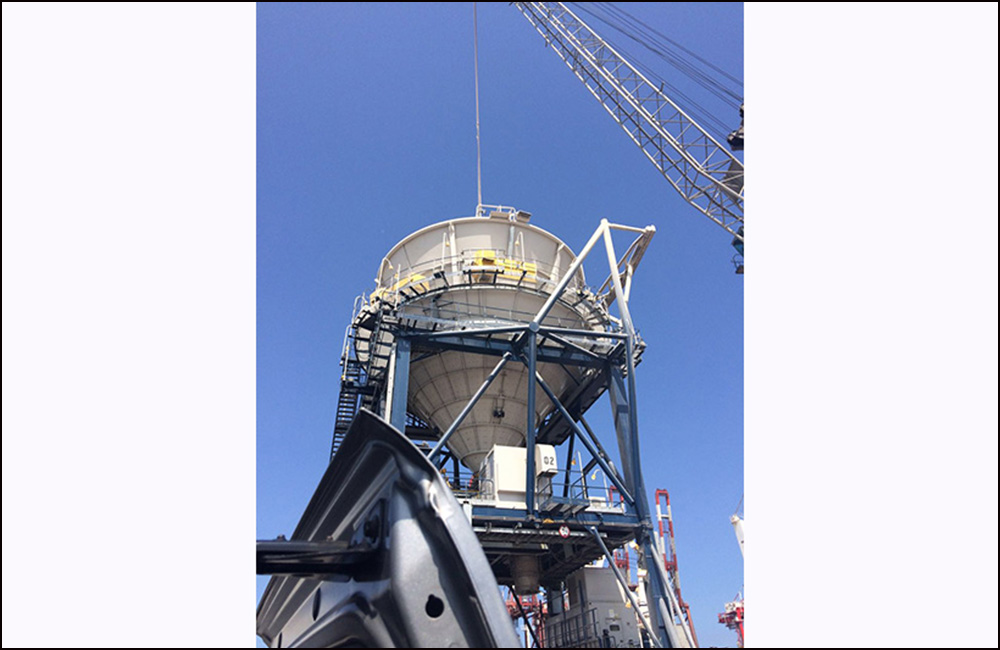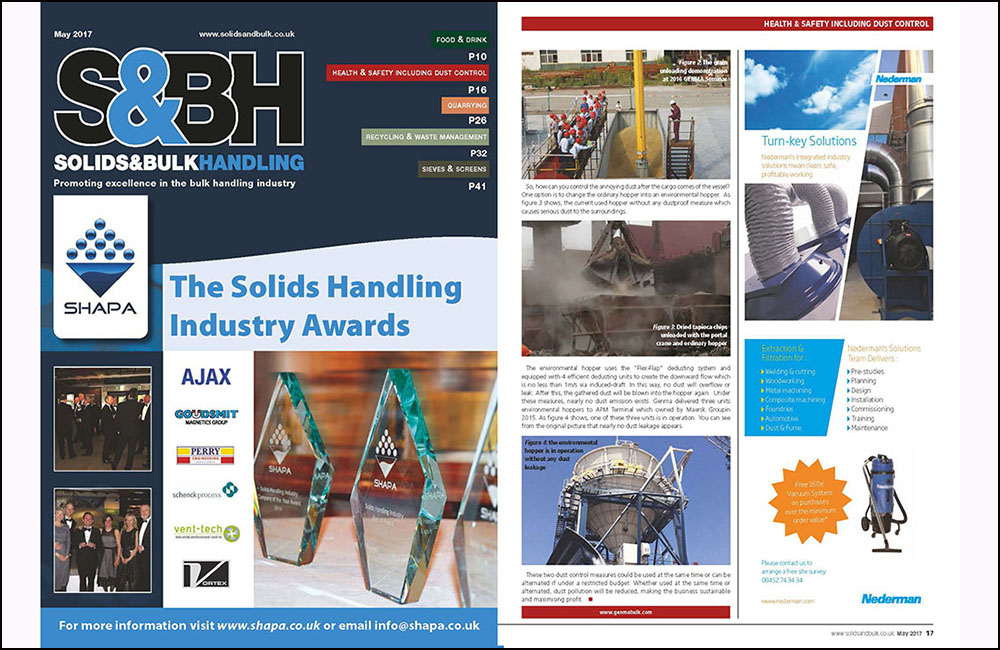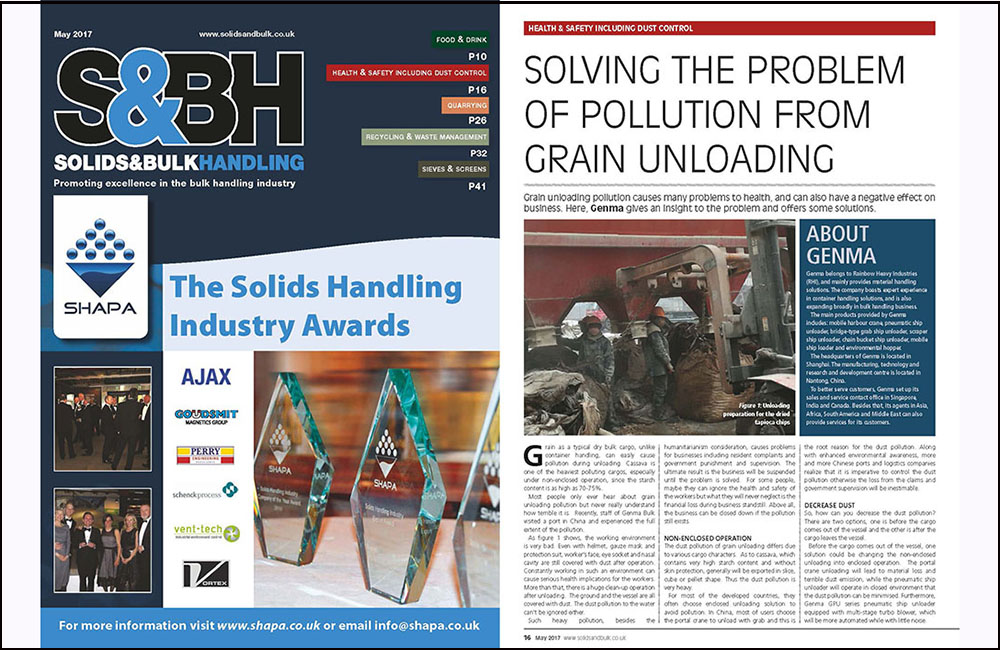Solids & bulk 2017.05
SOLVING THE PROBLEM OF POLLUTION FROM GRAIN UNLOADING
grain as a typical dry bulk cargo, unlike container handling, can easily cause pollution during unloading. Cassava is one of the heaviest polluting cargos, especially under non-enclosed operation, since the starch content is as high as 70-75%.
Most people only ever hear about grain unloading pollution but never really understand how terrible it is. Recently, staff of Genma Bulk visited a port in China and experienced the full extent of the pollution.
As figure 1 shows, the working environment is very bad. Even with helmet, gauze mask and protection suit, worker’s face, eye socket and nasal cavity are still covered with dust after operation. Constantly working in such an environment can cause serious health implications for the workers. More than that, there is a huge clean-up operation after unloading. The ground and the vessel are all covered with dust. The dust pollution to the water can’t be ignored either.
such heavy pollution, besides the humanitarianism consideration, causes problems for businesses including resident complaints and government punishment and supervision. The ultimate result is the business will be suspended until the problem is solved. For some people, maybe they can ignore the health and safety of the workers but what they will never neglect is the financial loss during business standstill. Above all, the business can be closed down if the pollution still exists.
grain as a typical dry bulk cargo, unlike container handling, can easily cause pollution during unloading. Cassava is one of the heaviest polluting cargos, especially under non-enclosed operation, since the starch content is as high as 70-75%.
Most people only ever hear about grain unloading pollution but never really understand how terrible it is. Recently, staff of Genma Bulk visited a port in China and experienced the full extent of the pollution.
As figure 1 shows, the working environment is very bad. Even with helmet, gauze mask and protection suit, worker’s face, eye socket and nasal cavity are still covered with dust after operation. Constantly working in such an environment can cause serious health implications for the workers. More than that, there is a huge clean-up operation after unloading. The ground and the vessel are all covered with dust. The dust pollution to the water can’t be ignored either.
such heavy pollution, besides the humanitarianism consideration, causes problems for businesses including resident complaints and government punishment and supervision. The ultimate result is the business will be suspended until the problem is solved. For some people, maybe they can ignore the health and safety of the workers but what they will never neglect is the financial loss during business standstill. Above all, the business can be closed down if the pollution still exists.
NON-ENCLOSED OPERATION
The dust pollution of grain unloading differs due to various cargo characters. As to cassava, which contains very high starch content and without skin protection, generally will be exported in slice, cube or pellet shape. Thus the dust pollution is very heavy.
For most of the developed countries, they often choose enclosed unloading solution to avoid pollution. In China, most of users choose the portal crane to unload with grab and the root reason for the dust pollution. Along with enhanced environmental awareness, more and more Chinese ports and logistics companies realize that it is imperative to control the dust pollution otherwise the loss from the claims and government supervision will be inestimable.
DECREASE DUST
So, how can you decrease the dust pollution? There are two options, one is before the cargo comes out of the vessel and the other is after the cargo leaves the vessel.
Before the cargo comes out of the vessel, one solution could be changing the non-enclosed unloading into enclosed operation. The portal crane unloading will lead to material loss and terrible dust emission, while the pneumatic ship unloader will operate in closed environment that the dust pollution can be minimised. Furthermore, Genma GPU series pneumatic ship unloader equipped with multi-stage turbo blower, which will be more automated while with little noise.
So, how can you control the annoying dust after the cargo comes of the vessel? One option is to change the ordinary hopper into an environmental hopper. As figure 3 shows, the current used hopper without any dustproof measure which causes serious dust to the surroundings.
The environmental hopper uses the “Flex-Flap” dedusting system and equipped with 4 efficient dedusting units to create the downward flow which is no less than 1m/s via induced-draft. In this way, no dust will overflow or leak. After this, the gathered dust will be blown into the hopper again. Under these measures, nearly no dust emission exists. Genma delivered three units environmental hoppers to APM Terminal which owned by Maersk Groupin 2015. As figure 4 shows, one of these three units is in operation. You can see from the original picture that nearly no dust leakage appears.
These two dust control measures could be used at the same time or can be alternated if under a restricted budget. Whether used at the same time or alternated, dust pollution will be reduced, making the business sustainable and maximising profit.

